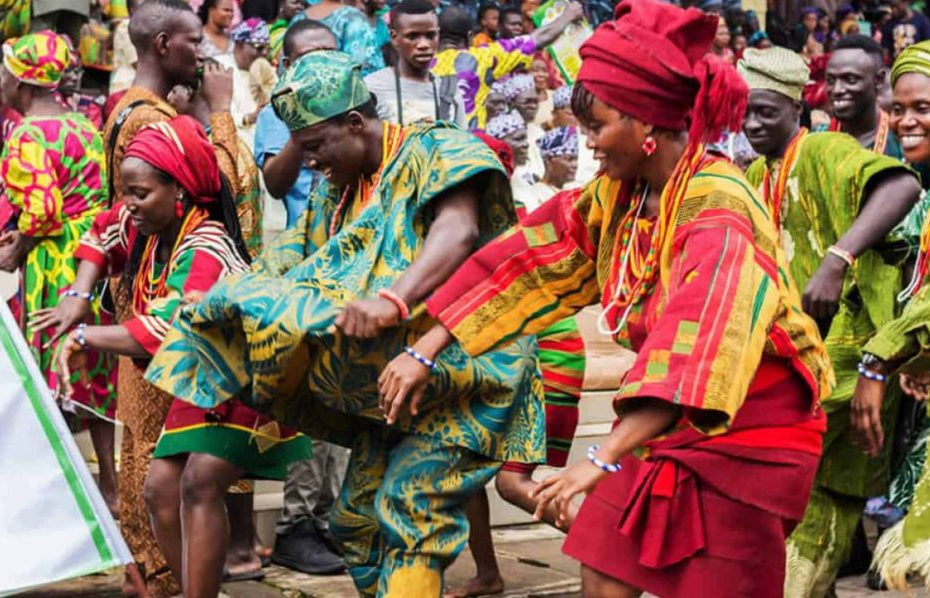Cuba has played a significant role in preserving and promoting Yoruba culture, which was brought to the island by enslaved Africans from West Africa. The Yoruba people, known for their religious practices, have adapted and practiced Santería in Cuba. Santería is a syncretic religion that incorporates elements of Catholicism and has its roots in the religious practices of the Yoruba people. People in Cuba and the Cuban Diaspora use the Lucumí language, derived from the Yoruba language, for ritual purposes.
Santería in Cuba
The Transatlantic slave trade brought the Yoruba people, originally from what is now Nigeria and Benin, to the Caribbean island. Despite the harsh conditions, they managed to preserve their rich cultural heritage, which has thrived and adapted in the diaspora. Read Also: Exploring the African Diversity: A Glimpse into Each Nation
Among the most significant manifestations of Yoruba culture in Cuba is the syncretic religion of Santería. This unique belief system emerged due to the fusion of Yoruba religious practices with elements of Catholicism, the only religion allowed by the Spanish colonial government. Despite the constraints, the Yoruba found ways to keep their deities alive, syncretizing them with Catholic saints. Over time, Santería adopted certain Catholic practices, further embedding the religion into Cuban life.
Lucumí Language
The Yoruba language, too, has survived in Cuba, preserved as Lucumí. Today, this language is used in the liturgical practices of Santería and is also spoken in other communities that practice Cuban Orisa, the Lucumí religion, or Regla de Ocha. The language has its unique vocabulary and grammar and is often used in religious ceremonies and rituals.

Yoruba Influence on Cuban Music
Yoruba culture has had a profound and lasting impact on Cuban music. Known for its percussion and the use of the clave, Cuban music incorporates rhythmic patterns derived from the Yoruba language and culture. The clave, a foundational element in many Cuban songs, finds its origins in Yoruba traditions. Specifically, various forms of Cuban music have integrated the clave de oche, a rhythmic pattern used in Santería ceremonies. This cultural exchange between Yoruba and Cuban music has shaped genres and influenced countless artists, leaving an indelible mark on the Cuban soundscape.
Preserving Yoruba Culture in Cuba
Cuba has made significant efforts to preserve and promote Yoruba culture, including establishing institutions and organizations dedicated to studying and promoting the religion and its practices. Notably, registered with the Cuban government, the Yoruba Cultural Association of Cuba plays a crucial role in this preservation. On the other hand, the independent Free Yoruba Association of Cuba represents the interests of the Yoruba community and provides an alternative perspective.
These nation-specific mutual aid societies, known as Cabildos, have played a pivotal role in preserving the roots of Yoruba belief and cosmology in Cuba. Today, multiple distinct Santería communities thrive on the island, with both government-registered and independent associations contributing to the vibrant Yoruba culture in Cuba.

The Yoruba diaspora extends beyond Cuba to Trinidad and Tobago, Brazil, Jamaica, the United States, and Haiti. In these regions, the Yoruba continue to flourish as a formidable cultural entity, symbolizing the resilience and adaptability of their ancestors and illustrating the enduring power of cultural transmission within the diaspora. Read Also: African fashion: The unique tapestry of heritage and creativity
Bottom Line
Cuba has been crucial in preserving and promoting Yoruba culture in the diaspora. A rich tradition of Santería, which incorporates Yoruba religious practices, thrives in the country, and the Cuban Diaspora uses the Lucumí language, derived from the Yoruba language, for ritual purposes in Cuba. Furthermore, the clave, a rhythmic pattern originating in the Yoruba language and culture, has impacted Cuban music.



